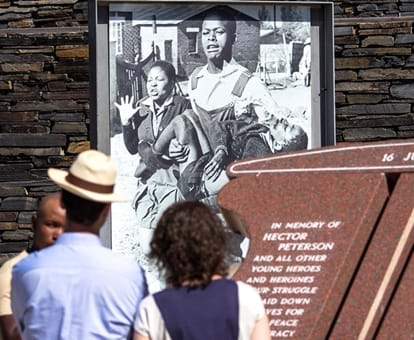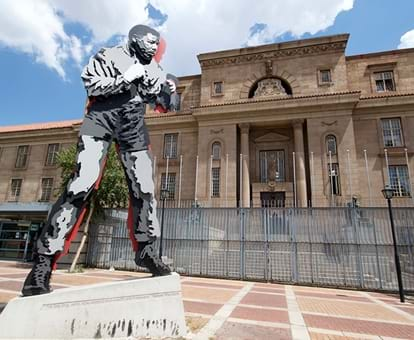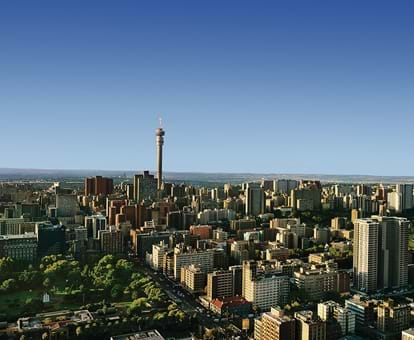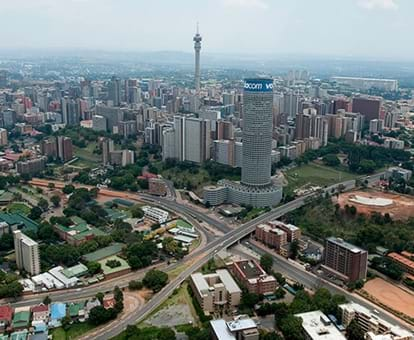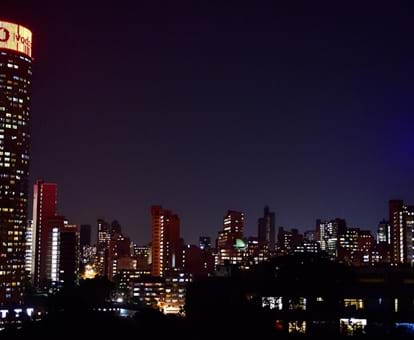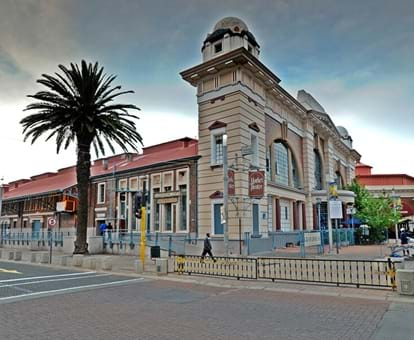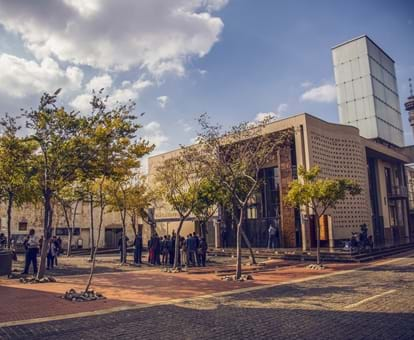By creating an account, I agree to the
Terms of service and Privacy policy
Choose your country and language:
Africa
Americas
Asia Pacific
Europe

AAbout the author
Yolisa Qunta is a published author, freelance writer, editor and researcher. Her first book was listed for Exclusive Books Homebru in 2016. Her subsequent non-fiction writing has been published in Australia, Britain, America and South Africa. In 2018 Yolisa was shortlisted for the Iceland Writers Retreat.
LLike any cosmopolitan city, Johannesburg has a colourful past, vibrant present and exciting future. The buildings in this ever-evolving city certainly reflect its rich heritage. The oldest brick structure in Johannesburg is Hy-Many House in Randburg, which was built in 1860 as a farmhouse. The farm was originally named Boschkop and in 1927 Tom Kelly bought it and renamed it Hy-Many, paying homage to his Irish roots. While the grand exterior facade remains intact, the interior has been renovated and modernised.
In 1893 then president Paul Kruger ordered the building of the Old Fort to serve as Johannesburg's first prison, which was then the first military fort in 1896. Initially, only male prisoners were held at the Fort but in 1910 a women's jail was added. In 1983 the decision was taken to stop using the fort as a prison. The Constitutional Court was completed on the site in 2004. The entire space was then opened to the public, who are able to take guided tours through the museum, admire the extensive art collection or attend a court case.
TThe Johannesburg City Hall is another monument that has stood the test of time. Built in 1914, the Edwardian-style structure was used as the town council hall. In 1994 the building underwent a massive renovation prior to the Gauteng Legislature moving in. The renovations focused on restoring the details of the building to their former glory, unearthing wonderful details such as mosaic floors and pressed ceilings. The city hall is still a working space but the open areas are often used for concerts, and are a popular wedding venue.
At first glance, Chancellor House doesn’t seem to be a remarkable example of architecture. However, the modest three-storey building in the CBD has significant historical value because of its famous tenants. Nelson Mandela and Oliver Tambo operated their law firm from the premises from 1952 to 1956. The location was chosen for its proximity to the Magistrate's Court. The practice was dissolved after Tambo went into exile and Mandela was arrested. Today Chancellor House is a museum where letters, photographs and newspaper clippings documenting the law firm and the work they did can The farm.
TThe Ponte Tower is another iconic landmark that is deeply divisive. People either love it or hate it. The tallest residential building in Johannesburg was designed by Rodney Grosskopff, Manfred Hermer and Mannie Feldman and completed in 1975. At the time the apartments were prized for city views and serviced by stores on the lower levels. During the 1980s the building fell victim to the decay sweeping the inner city and was taken over by gangs, becoming a criminal hotspot. During the worst parts, the garbage in the central core rose up to five storeys. From 2007 the building was renovated by the new owners who were determined to make sure it became a safe space again. One of the positive benefits of the new regime is that the building has featured in several movies. The cult classic District 9 features Ponte in the closing scenes, Chappie, a sci-fi movie by the same South African director had a few scenes set there and Resident Evil: The Final Chapter has a battle scene shot inside the tower.
While a lot of history is about looking back, Johannesburg as a city has proved over and again that it knows how to reinvent itself. The Orlando Power Station was completed in 1955 after many delays. It provided electricity to the surrounding areas until it was shut down in 1998. After 10 years the 33-storey-high towers were given a fresh coat of paint and rebranded as an adventure spot. They are now the world's first bungee jump between two cooling towers, and home of many activities aimed at adrenaline junkies. As the years roll on it is safe to assume the City of Gold will stay relevant as it looks to the future.
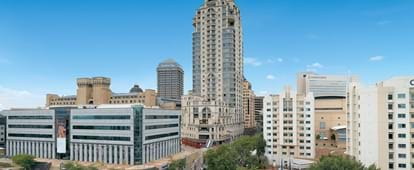
TThe fight against apartheid is also documented at the Hector Pieterson Memorial in Soweto. Placed close to the site of the June 1976 protest march, the museum is meant to commemorate the role that all South African students played in the uprising. Build in 2002, the museum incorporates a lot of audiovisual first-hand accounts of the events of the fateful day.
Cementing the city's reputation as a magnet for commerce, the Carlton Centre was completed in 1973. Towering at 223 metres it is the tallest building in South Africa and for a while in the Southern Hemisphere. In its heyday the adjoining Carlton Hotel hosted luminaries such as Henry Kissinger, Mick Jagger, Margaret Thatcher and Whitney Houston. The top floor offers panoramic views of the entire city. There’s a rumour that The Pinnacle in Kenya is going to be the continent’s tallest building, but that will only be verified when construction is complete in 2019.

|Terms and conditions|Disclaimer|Privacy policy|Social Media Terms and Conditions|Competition Terms and Conditions
